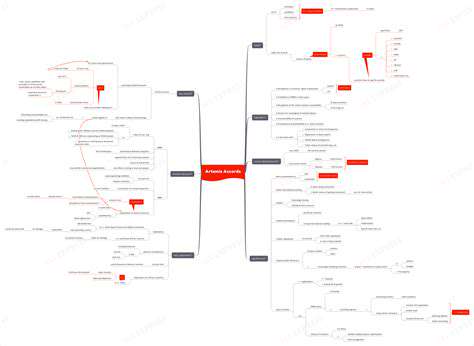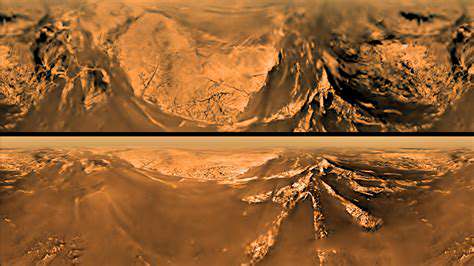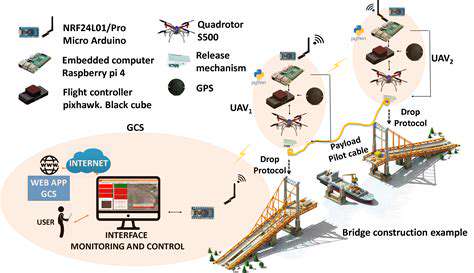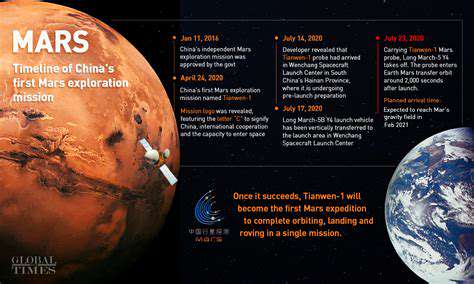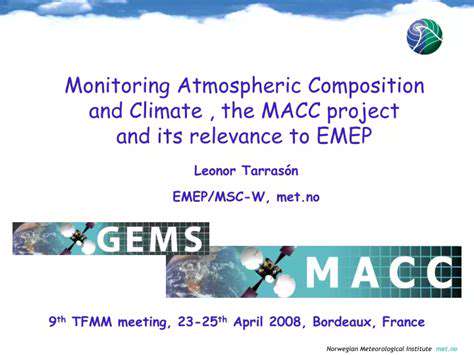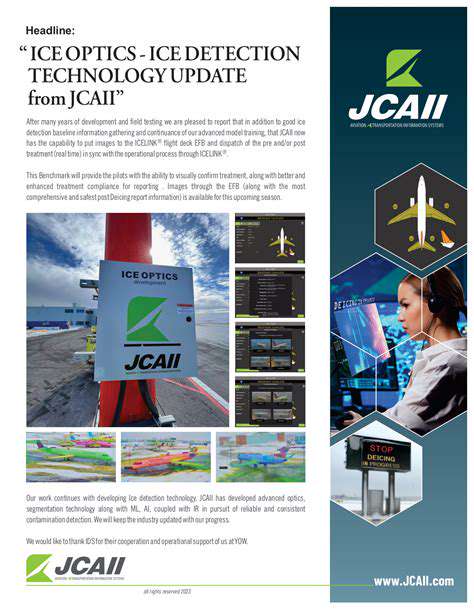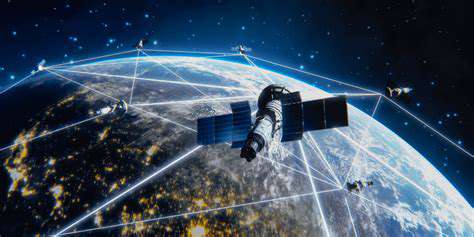The Lunar Surface: A Dusty Landscape
The lunar surface, a seemingly barren expanse, is actually a complex and fascinating environment. A significant portion of this landscape is comprised of regolith, a layer of loose, powdery material that blankets the Moon. This layer, formed over billions of years by impacts from meteoroids and micrometeoroids, is incredibly diverse in composition and properties, offering valuable insights into the Moon's geological history and the processes that have shaped its surface.
Understanding the lunar regolith is crucial to future lunar exploration and resource utilization. Its physical characteristics, such as its granular structure and porosity, directly affect astronaut mobility, spacecraft landing systems, and the potential for establishing long-term lunar bases. Analyzing the regolith's composition allows scientists to identify the Moon's elemental makeup and potential resources, particularly water ice, which could be used for life support and rocket fuel.
Composition and Formation of Lunar Regolith
Lunar regolith is a mixture of fragmented rock, minerals, and glass spherules, formed by the impact and subsequent pulverization of the underlying bedrock. The impact process not only breaks down the rock but also melts and vaporizes some of the material, leading to the formation of unique glass particles within the regolith. This intricate process leaves behind a rich record of the Moon's bombardment history.
The composition of the regolith varies across the lunar surface, influenced by factors such as the type of bedrock, the intensity of impact events, and the duration of exposure to solar wind and micrometeoroid bombardment. Scientists study these variations to understand the diverse geological processes that have shaped the Moon over billions of years.
The Role of Impacts in Regolith Formation
Micrometeoroid impacts are crucial in the continuous formation and evolution of lunar regolith. These tiny impacts, while individually seemingly insignificant, cumulatively create a significant layer of pulverized material over time. The sheer number of these impacts, combined with larger meteorite impacts, has profoundly shaped the lunar surface and the regolith's characteristics.
The impact process also generates heat, which can melt and vaporize surface materials. This process plays a critical role in the formation of glass spherules and other unique features within the regolith. The study of these features provides insights into the energy and momentum transfer during these impacts, shedding light on the dynamics of the lunar environment.
Water Ice and its Potential Significance
The presence of water ice within lunar regolith, particularly in permanently shadowed craters near the lunar poles, is a significant discovery. This water ice could potentially serve as a vital resource for future lunar missions, providing a source of drinking water, rocket propellant, and even oxygen for life support systems. The discovery of water ice significantly alters our understanding of the lunar environment and its potential for sustaining human presence.
The exact distribution and concentration of water ice in the regolith are still being investigated, but its presence opens up exciting possibilities for future lunar exploration and resource utilization. Scientists are actively studying the processes that have trapped and preserved this water ice for billions of years.
Exploring the Regolith for Lunar Resources
The lunar regolith is not simply a layer of dust; it's a potential source of valuable resources for future lunar missions and beyond. From extracting water ice for life support and rocket fuel to identifying potential building materials, the regolith presents a wealth of possibilities for resource utilization. Understanding the regolith's composition and properties is critical to unlocking these resources.
The presence of metals and other minerals within the regolith could also potentially be exploited for construction materials, advanced technologies, and even in the production of essential supplies. Detailed analysis and further research will be crucial to fully understanding the economic potential of lunar regolith.
Future Research and Exploration of Lunar Regolith
The ongoing study of lunar regolith is crucial for understanding the Moon's history and its potential for future exploration. Advanced robotic missions and future human missions will play a pivotal role in collecting more comprehensive data about the regolith's composition, structure, and resource potential. These detailed insights will lead to a more comprehensive understanding of the Moon's geological evolution.
Developing innovative technologies for regolith analysis and resource extraction is also critical. This includes the development of new tools and techniques for sample collection, analysis, and processing on the lunar surface. These advancements will be instrumental in shaping the future of lunar exploration and resource utilization.
Lunar Surface Composition and its Implications
Lunar Surface Minerals
The lunar surface is composed primarily of igneous rocks, formed from the cooling and solidification of molten material. These rocks, largely basalts and anorthosites, reveal a fascinating history of volcanic activity and impact events. Understanding the specific minerals present, such as plagioclase feldspar, pyroxene, and olivine, is crucial for interpreting the Moon's geological evolution and its formation processes. Analyzing these minerals provides insights into the conditions under which the lunar magma ocean solidified and the subsequent processes that shaped the lunar crust.
The presence of specific mineral phases, like ilmenite and titanium oxides, can also indicate the extent of volcanic activity and the composition of the mantle beneath the surface. Variations in mineral composition across different lunar regions further highlight the diverse geological history of the Moon, reflecting localized differences in magma source regions and subsequent impact events.
Impact Cratering and its Effects
The lunar surface is heavily cratered, a testament to its long history of bombardment by asteroids and comets. These impact events have dramatically altered the lunar landscape, creating various crater morphologies and ejecta patterns. The size and frequency of impact events have varied over time, providing clues about the evolution of the inner solar system's asteroid belt and the early solar system environment.
Studying the composition of impact melt and breccia, formed from the shattered and fused material of the impact event, reveals critical information about the target material and the energy involved. These impact events not only shaped the lunar surface but also potentially delivered volatile materials and even organic molecules, impacting the Moon's potential habitability, even in the distant past.
Volcanic Activity and Lunar Basalts
Lunar volcanic activity, though significantly less frequent than in the early stages of the Moon's formation, played a crucial role in shaping the lunar surface. The formation of large basaltic lava flows, particularly in the maria, is indicative of extensive volcanic activity. These basalts are rich in iron and magnesium, and their distribution across the lunar surface reflects the location and extent of past volcanic eruptions. Analysis of these basalts provides invaluable data on the Moon's interior structure and thermal history.
Regolith and its Properties
The lunar regolith, a layer of fine dust and fragmented rock covering the lunar surface, is a fascinating product of impact events and space weathering processes. This layer, composed of diverse materials, displays unique properties including low bulk density, high porosity, and high surface area. The regolith's composition, which varies across the Moon, holds clues about the cumulative impact history, and space weathering processes.
Lunar Surface Water Ice
The presence of water ice in permanently shadowed craters near the lunar poles has significant implications for future lunar exploration and resource utilization. This water ice, potentially abundant in some regions, could be used as a source of drinking water, fuel production, and life support for future lunar missions. Understanding the distribution, concentration, and stability of this water ice is crucial for planning sustainable lunar outposts and future scientific investigations. Future missions will focus on detailed analysis of the distribution and characteristics of this water ice.
Resource Potential and Implications for Future Exploration
The Moon's surface holds a potential wealth of resources that could be invaluable for future lunar missions and beyond. From the water ice mentioned earlier to various minerals and elements, the lunar surface offers a range of resources that could be extracted and utilized for constructing habitats, producing fuel, and supporting scientific research. Understanding the distribution and accessibility of these resources is vital for planning sustainable lunar outposts and future space exploration missions, potentially extending human presence beyond Earth.
Investigating Lunar Craters: A Window into the Past
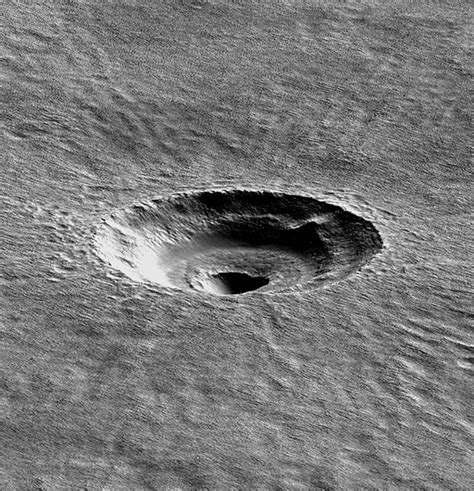
Understanding the Formation of Lunar Craters
Lunar craters, those mesmerizing scars across the lunar surface, offer invaluable insights into the early solar system. Their formation is primarily attributed to impacts from asteroids and comets, remnants from the period of intense bombardment that shaped the inner solar system billions of years ago. These impacts, of varying sizes and velocities, left behind a wide range of crater sizes and morphologies, providing a detailed record of thesolar system's violent past. Understanding the processes behind crater formation allows scientists to reconstruct the history of bombardment and to estimate the ages of different lunar regions.
The energy released during these impacts is enormous, transforming the surrounding lunar surface. This energy is not only responsible for excavating the crater itself but also for ejecting material, creating ejecta blankets that radiate outward from the impact site. Analyzing the composition and distribution of this ejected material is crucial for understanding the impactor's characteristics and the composition of the lunar surface beneath.
Analyzing Crater Morphology to Reveal Lunar History
The morphology, or shape, of a crater provides a wealth of information about the impact event that created it. Factors like the angle of impact, the velocity of the impactor, and the properties of the target material all influence the final crater shape. A well-preserved crater with sharp, distinct rims, for example, might suggest a relatively high-velocity impact on a relatively strong target material.
Furthermore, the presence of secondary craters, smaller craters formed by debris ejected from the primary impact, can offer clues about the impactor's size and the distribution of material around the primary crater. By studying the intricate patterns of craters, scientists can create a chronological record of the lunar surface's bombardment history. This is like reading a cosmic history book, and each crater is a chapter within it.
Utilizing Lunar Craters for Dating and Mapping
Lunar craters are invaluable tools for dating the surface of the Moon. By counting the number of craters of a given size in a specific region, scientists can estimate the age of that region relative to other regions on the Moon. This relative dating is crucial for understanding the timing of major geological events and the evolution of the lunar surface over time.
The distribution of craters also helps in creating detailed geological maps of the Moon. Identifying regions with high crater densities allows scientists to distinguish between areas that have experienced more intense bombardment and those that have been relatively shielded. This information is critical for understanding the Moon's geological history and for planning future lunar missions.
